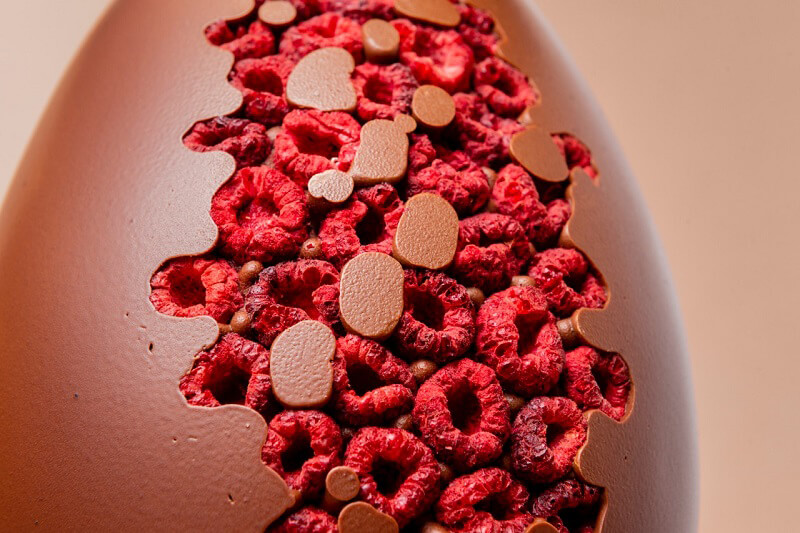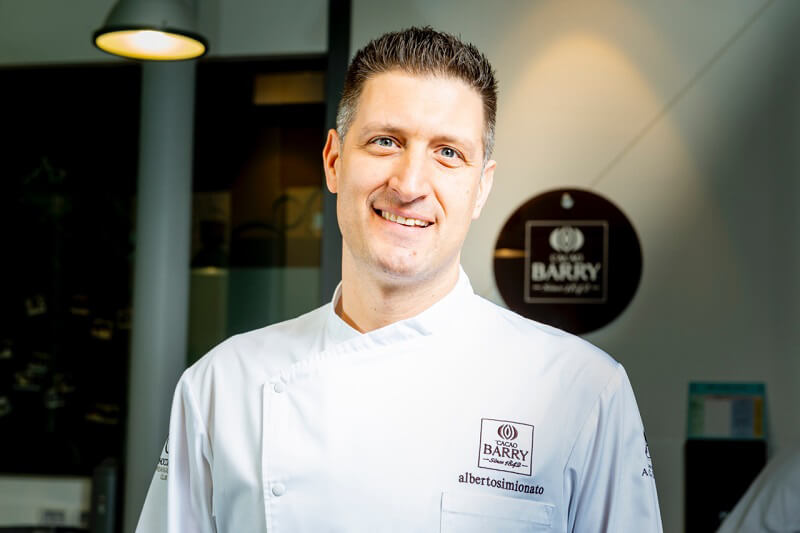Easter is just around the corner, and for the most mouth-watering feast of the year, the traditional Easter egg, a chocolate triumph with an intriguing surprise inside, is a key element of its charm and the reason for its fame from ancient tradition to the present day. A symbol of life and rebirth, the chocolate egg is hard to give up at any age, but what if, instead of buying it, you could prepare it at home?
For a homemade Easter egg, here is a recipe from Maitre Chocolatier Alberto Simionato of the Chocolate Academy Center Milan, designed to invite all food-lovers and aspiring pastry chefs to get their hands into chocolate and become familiar with the processing of this exquisite ingredient.
Recipe for a chocolate egg decorated with berries by Alberto Simionato
Ingredients
200 g milk chocolate (Alunga, Cacao Barry recommended) 140 g of dark chocolate (Ocoa recommended, Cacao Barry) 50 to 150 g of dried fruit depending on the type chosen
Procedure for tempering the chocolate
Finely chop the chocolate and melt 2/3 of it in a microwave or bain-marie, bringing it to 45°C. Gradually add the chopped chocolate to the melted chocolate and stir vigorously until the temperature is lowered to 30°C for dark chocolate and 28°C for white chocolate. If there are still some small pieces of chocolate left which have not been melted, speed up the operation with an immersion blender.
Procedure for casting and making the egg
Once the tempered chocolate has been obtained, place the dehydrated raspberries (or other dried fruit to taste) on the bottom of one half of the egg mould, arranged in such a way that, once the egg has been assembled, they are well centred.
Fill a piping bag with the tempered chocolate and make a small hole at the tip: fix the raspberries in the mould with the chocolate; leave the chocolate to harden in a cool place (16 °C) for 2 minutes, until it no longer sticks to your fingers.
Then pour the tempered chocolate into the mould and turn the egg until the mould is evenly covered with chocolate. Then turn the mould upside down so that the excess chocolate runs off. As soon as the chocolate has hardened a little, scrape off the uneven edges with the aid of a scraper.
The shell should be at least 4 mm thick to give the egg some rigidity. If it is too thin, repeat the process by pouring in more tempered chocolate. When pouring in several layers of chocolate, do not wait too long between each one: the chocolate from the previous layer must not be solid, but it must not drip either. Repeat the process with the second half of the egg. Leave the two halves to harden overnight at 16°C.
The next day, gently remove them from the moulds. Heat a flat surface (the bottom of a pan or a baking tray). Pass the edges of the two eggs over the flat surface so that the chocolate melts a little and acts as a glue for the two shells. Insert the surprise and make the two halves fit together perfectly. Let the joint harden.
Photo Credits: M. Cavalleri



